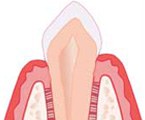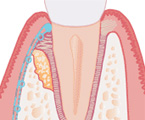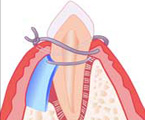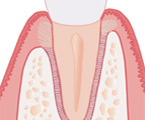Services

Services
Periodontal
Regeneration
Surgery-Tissue
Regeneration
and Bone Grafting
Today, we have the ability to grow bone where needed. This not only gives us the opportunity to place implants of proper length and width, it also gives us a chance to restore functionality and esthetic appearance. Bone grafting can repair implant sites with inadequate bone structure due to previous extractions, gum disease or injuries.
Ideally, the treatment of periodontal disease returns tissues to their original state. Patients should familiarize themselves with these three types of regenerative surgery.
Bone Grafting
Bone grafting calls for placing various materials in the bone defect to stimulate the patient’s bone to re-grow.
Though this procedure has been used for over 75 years, today’s materials are much superior in accomplishing our goals. After 6-12 months, the implanted material is replaced by new bone.
This procedure not only gives us the opportunity to place dental implants of proper length and width, but it also gives us a chance to restore functionality and aesthetic appearance.
Bone grafting can repair implant sites with inadequate bone structure due to previous extractions, gum disease, or injuries.
Types of
Bone Grafting
There are two main categories of Bone Grafting and regardless of the group, the principles of grafting remain the same:
Minor bone grafting: typically falls within the parameters of oral surgery and can generally be managed in an office setting. These grafts are generally placed in preparation for dental implants.
Major grafting: Usually performed in a hospital setting, these are typically performed to repair defects of the jaws.

Placing bone
material

Bone material
placed in defect

Bone material
stimulates
patient’s natural
bone to
regenerate
Guided Tissue
Regeneration
This type of regenerative surgery depends on guiding the proper tissue to heal the periodontal lesions. Once healed, the gum tissue migrates down into the bone pocket quickly. Unfortunately for the patient, this doesn’t allow time for the bone to refill the pocket, enabling the defect to persist. The predictability of guided tissue regeneration allows time for the bone to fill back in, yielding the best results.


Defect


Membrane
isolating defect
so bone has time
to heal



New bone
forming as
membrane
dissolves


Final healing
Cell Stimulation
Cell stimulation involves the placement of special proteins into the defect, which stimulates production of new bone and tissue cells that reform the normal periodontal complex. These porcine (pig) proteins carry no risk of disease transmission and often provide the best approach under certain circumstances.
Your surgeon will discuss with you whether you are a good candidate for cell stimulation. Patients can feel confident that periodontal regeneration is now being used more and more.